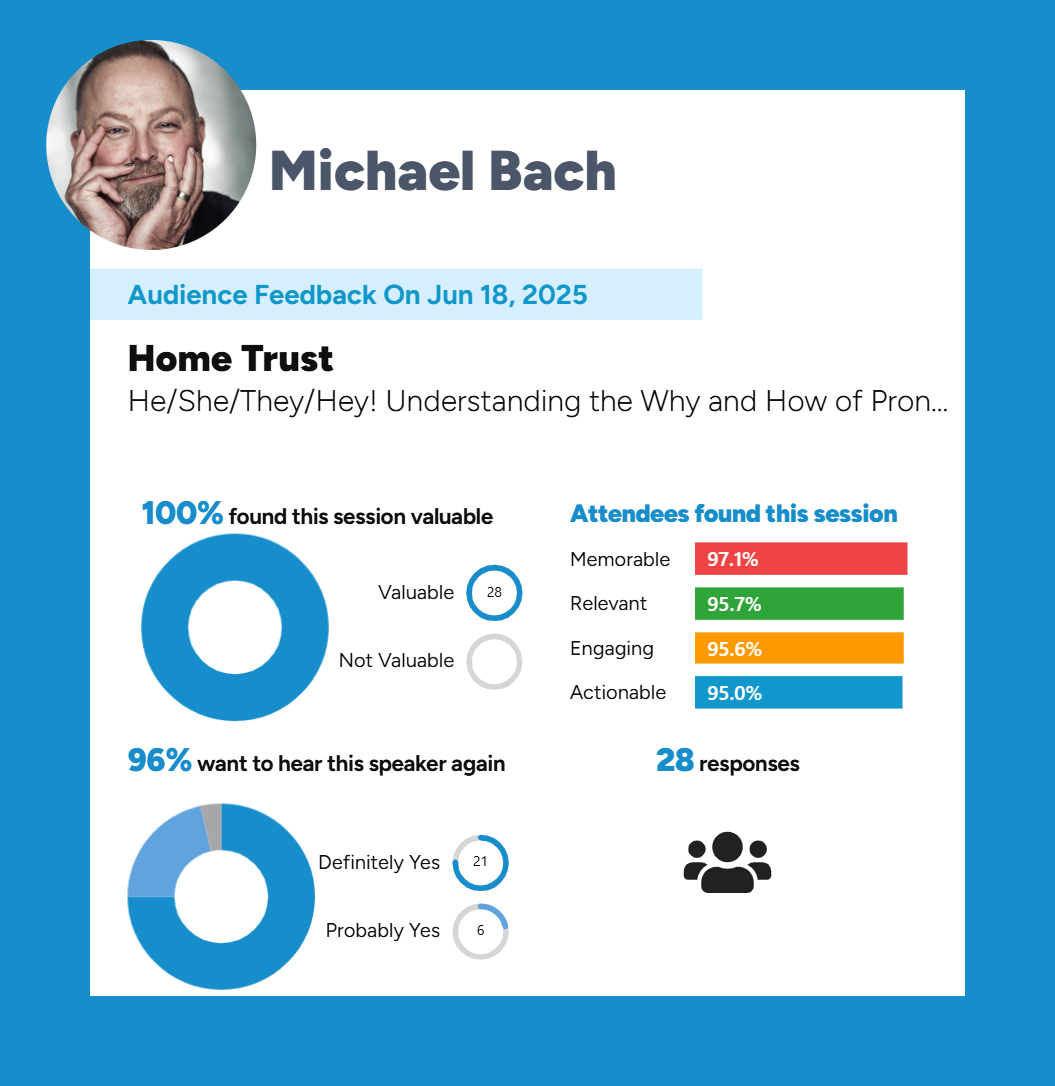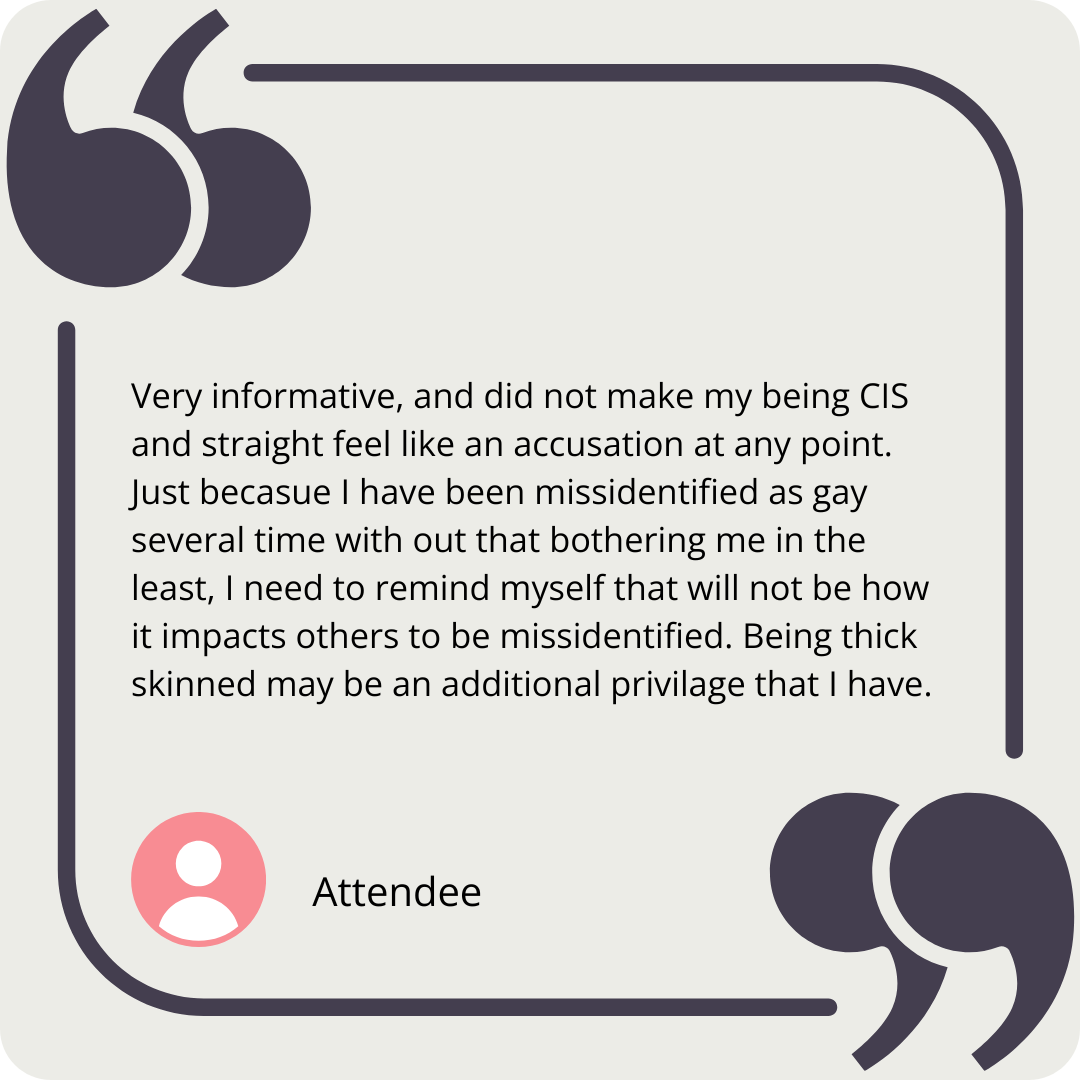
He/She/They/Hey! Understanding the Why and How of Pronouns
We’ve all heard someone say it; that introduction where they not only share their name, but also their pronouns. “Hi, my name is Alex, and my pronouns are they/them,” or something of that nature. But what does it matter? And what exactly are pronouns?
Pronoun usage isn’t new, nor is the use of ‘they’ in the singular as a gender-nonspecific identifier (which dates back to the 13th century – just ask Chaucer and Shakespeare). What is new is the inclusion of pronouns as part of introductions, and in email and various online platforms like LinkedIn, which is where the confusion lies.
He/She/They/Hey! Understanding the Why and How of Pronouns is designed to help people understand what pronouns are, and more importantly, how to use them inclusively in order to create space where people can be themselves. Leveraging content from his best-selling book Alphabet Soup: The Essential Guide to LGBTQ2+ Inclusion, Michael Bach takes participant on a learning journey to understand the importance of pronoun identification in maintaining 2sLGBTQI+ inclusive spaces.
Learning Objectives
Participants will come away with a clear understanding of:
What is a pronoun and what types of pronouns are there.
Why using pronouns is an important indicator of 2sLGBTQI+ inclusion.
How to properly indicate ones pronouns in an inclusive and informative manner.
Would you like to see a sample?
Would you like to see a sample of Michael presenting this topic to determine if it’s the right topic for you? Well, now you can!
Fill out the form, and you’ll be able to watch a sample of 10 minutes of the content, as well as download a detailed information sheet about this topic.
This Topic By The Numbers
What Attendees Are Saying
What Clients Are Saying:
Michael's presentations on Unconscious Bias and Privilege were outstanding. He engages immediately with the audience in a genuine way, which puts everyone at ease. He is passionate about the topics and it shows. These presentations have empowered attendees to affect change in their own organizations.




